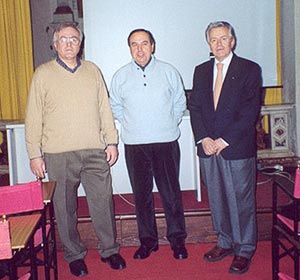 |
[ZAWiW] [gemeinsamlernen] [LiLL] | ||
|
Page 1 of 4
|
|
|
| home | ||
|
|
Answer from Vicenza | |
|
|
Old Town Centres in Crisis | |
 |
||
Answer from Vicenza
Stand:HOUSING AND LIVING UNITS

Mario Manuzzato, Enrico Messina, Gianpietro Rigotto
*The second year of SoLiLL group research will be marked by two different stages, while the attention paid to the individual ways of learning will be regular.
- references to the records on the house in Vicenza in the XIXth and XXth centuries; an interview with former urban planners of Vicenza in charge from the post-war period to nowadays (digital editorial report);
- a meeting with students studying to be building surveyors to assess all the requirements of building a house in order to create better living conditions, that is the equivalence house-suburb-town;
- work with the students of a senior high school, specializing in Computer Science, on the changes of the town in the XXth century and mostly the transformations in Vicenza;
- a study on the life-friendliness of the town.
THE HOUSE AND ITS HISTORY
There is no significant evidence of ancient houses in Italy. They were made
of poor, quickly perishable building material, like cob and timber, for the most
part.
They were built in the countryside for the use by patriarchal families and they
usually were single family houses, except for Roman "insulae", which
were dwellings, which made a come back in the XXth century.
From the Middle Ages on, each country shows its own peculiarities since the social and economic background has been changed by the arising middle class and wealthy peasantry. No more courtyards, but kitchen gardens surround the house that grows in height rather than in width. Its outside look changes and is adorned with balconies, however, still without toilet facilities and water supply inside the house.
